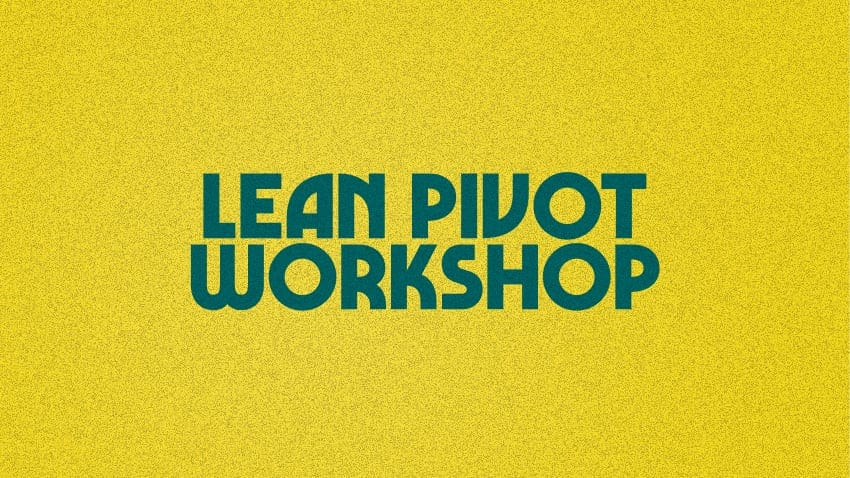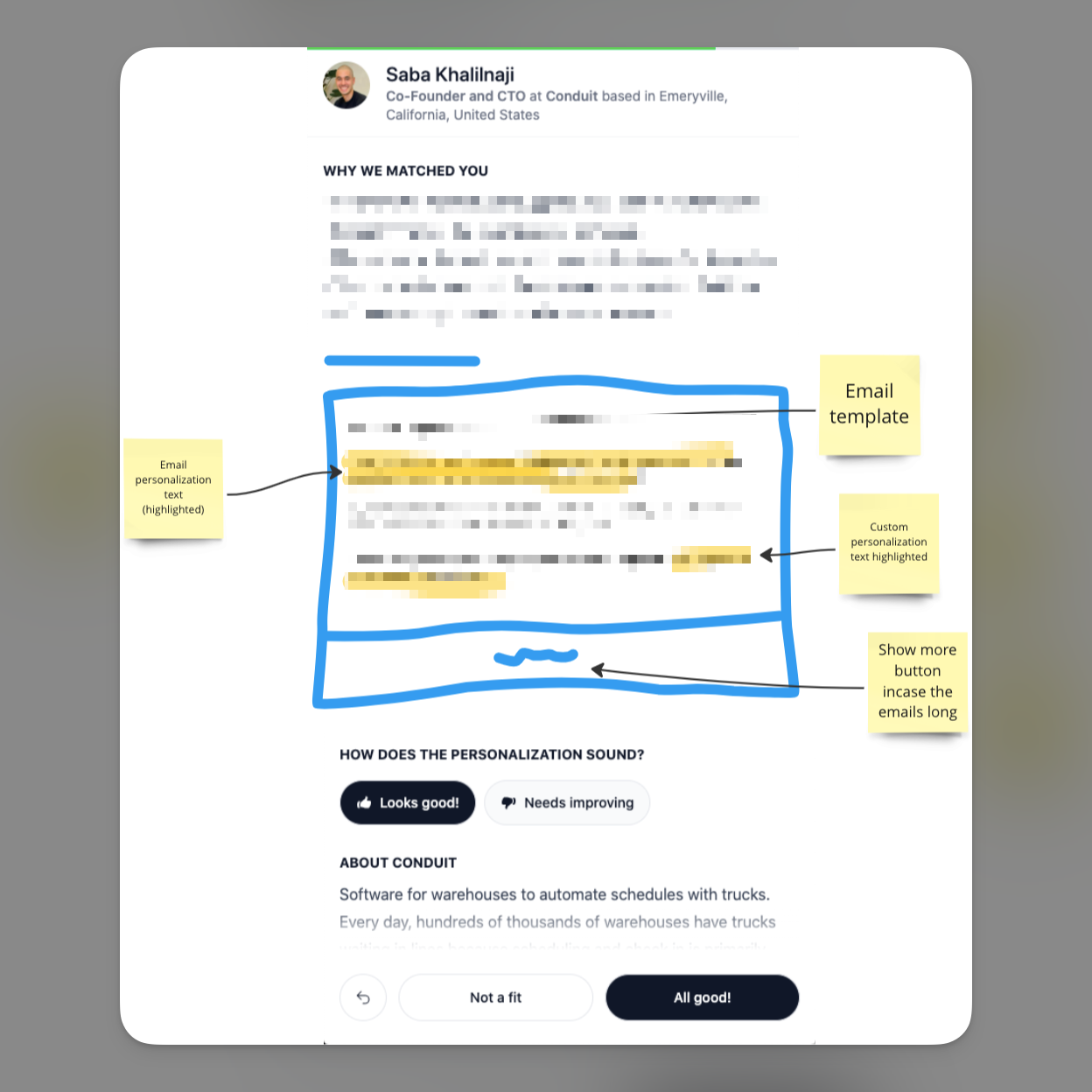How to navigate your pivoting anxiety without coding

“If the dev team has to go through another pivot, I don’t think we’ll survive.” — The chilling words of my tech lead at Aristotle.
In the startup world, change is not just constant—it’s a matter of survival. The graveyard for most startups comes from rushing to scale without a solid product-market fit. But pivoting too often can also kill a startup.
After months of grinding through late nights and weekends to launch our product, hearing that it’s not hitting the mark was devastating.
Another total pivot meant hundreds of hours of coding out the window. It meant confronting burnout, sinking morale, and questioning whether we have what it takes.
After all the effort put into the initial idea...
- How do you instill confidence in your team that the new thing will work when the old one didn’t?
- How do you build momentum quickly without getting paralyzed by uncertainty?
- How can you determine if the new system will work without coding?
As we faced these challenges, we realized that a traditional pivot process would be too slow and risky.
It was then that we discovered the Lean Pivot workshop. It promised to fast-track our understanding and implementation of the new direction without writing a single line of code.
In this post, I’m peeling back the curtain on what could have been our startup’s final act and how this workshop saved us.
The early days
Aristotle’s initial concept was to help founders with sales through cold email.
Our unique differentiator was a Tinder-like interface for users to approve or reject highly personalized cold emails generated from leads’ social profiles. Our users cared because it improved deliverability and response rates.

The initial roll-out of Aristotle was like catching a good wave – it felt right.
- Our messaging resonated with our ICP.
- We had many prospects on the waitlist.
- Existing customers were hyping us up.
At that point, we felt invincible. Little did we know the party would end early. The market shifted, and after a few months, the energy and momentum faded.
The need for a pivot didn’t slap us in the face. It was drawn out, like watching a sloth run a marathon.
- Sign-ups to our waitlist started to dry up.
- The boundaries of the problem space kept expanding, making it harder for us to keep up with the cold email game.
- Slack became a showcase for new competitors, each a reminder that we weren’t alone in the race anymore.
- And as we felt the cool shadow of these YC startups, the fire from our backers started to dim.
That’s when our founders suggested a pivot.
The new idea? Use social monitoring to help sales teams follow up with their entire pipeline and convert them into paying customers.
I liked the idea but knew it would be a massive technical undertaking that sparked anxiety across the team.
Realizing a pivot was essential, we knew the usual research, planning, and development cycles wouldn’t cut it. We couldn’t afford to spend weeks or months.
The market shifts were swift, but our response needed to be swifter.
The Lean Pivot workshop was our solution—a hands-on simulation where we could map out and test the customer journey of our new product.
How the Workshop Addressed Our Pivot Challenges
The workshop was practical because it provided solutions for the key challenges we faced in pivoting, including:
Long Development Cycles
This allowed us to prototype and test the customer journey rapidly without lengthy development cycles. We refined our process in 2 hours instead of 2 months.
Lack of Validation
Our whole team collaborated to simulate the new approach in real-time. This instantly validated our assumptions and gave us confidence that it could be done.
Misalignment
We aligned all players under a unified strategy with shared ownership. Our programmers and operations team were both actively engaged.
The Workshop Structure
Here is how we structured it to get the most out of it:
- Designate a Facilitator: Assign a team member with strong analytical and facilitation skills to lead the workshop for focus and productivity. This is probably you.
- Use a whiteboard or a digital tool like Miro to visualize the process. This setting allows for real-time feedback from everyone on your team. Get the template below!
- Define the End Goal: Start with clarity by identifying the desired outcome for the user. For Aristotle, it was about sending a relevant and meaningful message to a lead.
- Define the Starting Point: With the end established, write down where the user’s journey begins.
- Detail the Middle Steps: Break down the actions required to move from the starting point to the end goal. For us, this meant:
- (Start) Identifying Leads: Selecting the leads with potential for re-engagement.
- Researching Online Activity: Gathering and analyzing online behavior to understand what they discussed professionally.
- Thematic Grouping: Organizing collected data into actionable Signals to inform outreach. This included funding announcements, podcast appearances, job listings, etc.
- (End) Craft and send a focused, relevant email that restarts the conversation and demonstrates value for the lead.
- Do a retrospective: Your co-workers won't get the opportunity to voice out everything they learned. Be sure to capture this at the end because they would've learned a lot!
The core task here is to imagine that you and your teammates are acting as if they are your future system.
For example, we had a step called "Gather the past 3 months of a lead's activity on LinkedIn or Twitter." We could've used a tool, but given the time constraint, all we had to do was look them up and copy-paste a screenshot into our Miroboard.
Key benefits
Conducting our own Lean Pivot workshop enabled:
- Rapid Prototyping: In 2 hours, we simulated the new approach and refined our technique in real-time. This was important because the team could feel how the new direction might function and introduced confidence in the pivot.
- Team Alignment: The workshop’s collaborative nature aligned the team under a unified strategy. Discussions surfaced concerns, allowed immediate brainstorming, and fostered ownership from the programmers to the operations team. We weren't chasing our tail anymore!
- Immediate Takeaways: By the end, we had actionable steps, not just theoretical understanding but a practical plan. For example, we used LLMs to develop a list of "Signals" to monitor. But we realized there’s more to it when we observed what people do online.
Take the first steps towards a confident pivot
If our journey resonates with you, here’s how you can apply the workshop yourself.
- Gather Your Team: Schedule a meeting with key players in your startup who will lead and be affected by the pivot.
A copy-paste Slack message for your team
@channel
Time for a Lean Pivot workshop
Team, we need to validate our new product direction before moving forward.
Instead of drawn-out planning, I’d like us to try a Lean Pivot workshop.
This is a 2-hour simulation where we’ll map out and test the new user journey together in real time.
The goal is to:
- Prototype the new experience rapidly
- Get feedback and align as a team
- Validate assumptions before coding
It’s a hands-on exercise that can give us an actionable plan quickly.
I’ve scheduled it for [Date/Time]. Please block that 2-3 hour window.
No need to prepare anything. Just bring your insights and an open mind.
Reply below if you have any other questions.
Let’s use this workshop to gain confidence in our pivot.
- Download Our Workshop Template: Get a head start with our structured outline that walks you through each step in the Lean Pivot workshop:
Get the Lean Pivot Workshop on Miroverse.
- Run the Workshop: Conduct your first workshop using our template as a guide. Remember to designate a facilitator, create a collaborative environment (snacks help!), and follow through with the steps outlined inside it.
Simulating the new path aligned our team and validated we could deliver value once more — without coding.
The Lean Pivot approach equipped us with a rapid testing method we still swear by today.
As long as we keep collaborating and experimenting, we’re ready to ride out whatever waves come next.
Shout-outs
- Tom Kerwin from Innovation Tactics for introducing the concept of the workshop!
